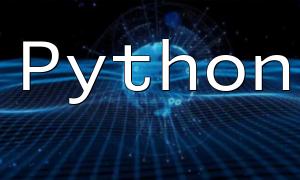As artificial intelligence and machine learning become increasingly popular across industries, efficiently processing and analyzing large datasets has become a key challenge. Dimensionality reduction and feature extraction not only reduce computational complexity but also improve model accuracy and efficiency. This article demonstrates how to implement these techniques in PHP using the PHP-ML library.
Dimensionality reduction refers to the process of transforming high-dimensional data into a lower-dimensional form while retaining as much important information as possible. Feature extraction, on the other hand, focuses on selecting the most representative attributes from raw data to improve model training and prediction. Both techniques are essential in the machine learning workflow.
In PHP, the PHP-ML library provides powerful tools for machine learning tasks, including dimensionality reduction and feature extraction. The following sections illustrate the process from setup to implementation.
composer require php-ai/php-ml
Once installed via Composer, you can immediately begin using its machine learning algorithms and utilities within your PHP projects.
Before performing dimensionality reduction or feature extraction, datasets typically need preprocessing, such as handling missing values and scaling. Below is an example of loading a CSV dataset and applying imputation and normalization.
use Phpml\Dataset\CsvDataset;
use Phpml\Preprocessing\Imputer;
use Phpml\Preprocessing\StandardScaler;
$dataset = new CsvDataset('data.csv', null, ',', true);
$imputer = new Imputer();
$imputer->fit($dataset->getSamples());
$imputer->transform($dataset->getSamples());
$scaler = new StandardScaler();
$scaler->fit($dataset->getSamples());
$scaler->transform($dataset->getSamples());
PCA (Principal Component Analysis) is a widely used dimensionality reduction method. It transforms data into a lower-dimensional space while retaining as much variance from the original dataset as possible.
use Phpml\DimensionalityReduction\PCA; $pca = new PCA(2); $pca->fit($dataset->getSamples()); $pca->transform($dataset->getSamples());
PHP-ML provides multiple options for feature extraction. The following example demonstrates text-based feature extraction using a bag-of-words model combined with the TF-IDF transformer to identify the most significant features.
use Phpml\FeatureExtraction\StopWords;
use Phpml\FeatureExtraction\TokenCountVectorizer;
use Phpml\FeatureExtraction\TfIdfTransformer;
$vectorizer = new TokenCountVectorizer(new StopWords('en'));
$vectorizer->fit($samples);
$vectorizer->transform($samples);
$transformer = new TfIdfTransformer();
$transformer->fit($samples);
$transformer->transform($samples);
Dimensionality reduction and feature extraction play vital roles in machine learning applications. By leveraging the PCA algorithm and feature selection tools from the PHP-ML library, developers can effectively simplify datasets and extract meaningful attributes, ultimately improving training efficiency and prediction accuracy. These techniques enable better handling of large datasets and more precise analytical outcomes.










